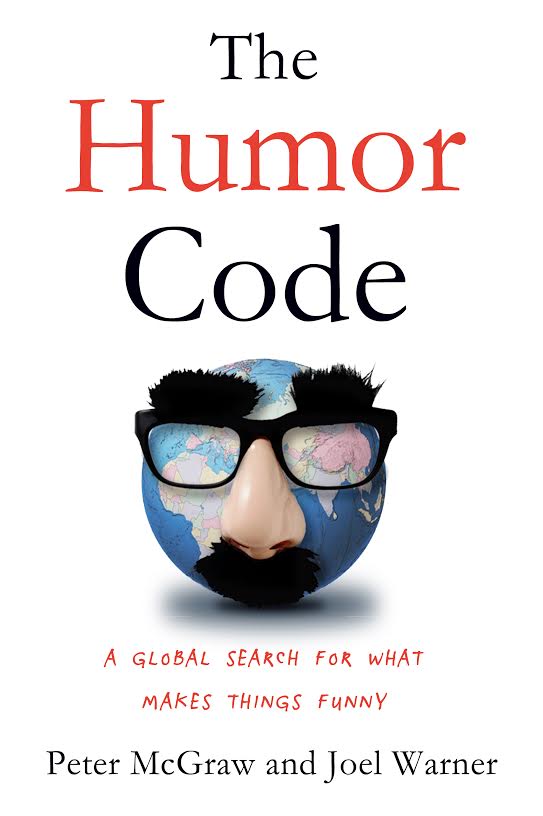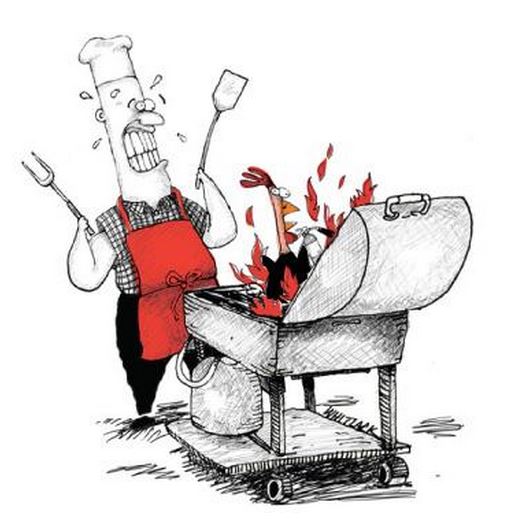You're smelly and you need a bath!
Wait...is that a joke?
For every company that succeeds with a funny marketing campaign, there are many others that fall flat, or even worse, offend their customers.
Funny advertising can get you attention in crowded arenas (that means in the middle of Times Square or on Twitter), but telling jokes is pretty risky.
To alleviate these risks, read on! The whoopie cushions and rubber chickens will follow.
Don't Laugh Pointlessly
At face value, adding a little ha-ha to what might otherwise be feature and benefit driven is attention grabbing, memorable, and produces social sharing.
Dr. Peter McGraw, founder of the Humor Research Lab at the University of Colorado Boulder, cautions against using humor just to get a laugh or to differentiate your brand from the competition.
Make sure your funny campaign has a purpose that relates to your product or integrates with your marketing goals.
-
Ask yourself, What do you want to accomplish with this marketing or communication tactic? Have a goal in mind, and track the results. This could be something softer than an increase in sales, such as an increase in social media interaction.
-
Make sure it relates to your product or service, even if it's in an unexpected or irreverent way.
-
Be inclusive not exclusive - is the joke widely shareable? Be unique but not too esoteric.
Don’t Be Tedious or Tasteless
What makes a funny flop? Often, you're jokes are just boring.
“If the humor proves to be boring, then it implies your brand is not interesting and who wants to spend money on the 'boring' brand?" says McGraw. "If the humor is offensive and alienates a segment of the population, then the damage may be costly.”
To avoid laughing alone, McGraw suggests companies first test humorous stunts. He notes that small businesses and start ups that embrace lean principles are ideally suited to test before launching a full-scale campaign.
In McGraw’s upcoming book, The Humor Code, due out on April Fool’s Day 2014 (that’s no joke!), he and journalist Joel Warner detail their epic quest to discover the secret behind what makes things funny.

But if understanding the DNA of humor seems a little daunting or time consuming, McGraw offers these broad spectrum Dos and Don’ts:
-
Avoid using scattalogical humor, especially when it comes to food and beverage products.
-
Know your audience and their sense of humor - “listen” on social media (and in person) before you speak.
-
Mild humorous attempts are usually safer than bold comedy.
Be Careful If You're Poking Fun of Consumers
A simple question about consumer behavior can lead to an endless source of humorous marketing opportunities. Brad Barrett, CEO of Grill Grate, advises business owners to ask ‘What’s funny about how people use your product?’ and then poke a little fun.
Nearly everyone can relate to the occasional hiccup in the kitchen or on the grill. Brad capitalizes on such relatively harmless fiascoes, flops, and messes in his campaigns. “Grilling is fun and provides humorous moments such as burning the chicken yet again,' he says. That sort of humor hits home.
Brad hired an artist to depict what he refers to as “The Bonfire Chicken Cartoon.” The cartoon depicts a chicken using a fire extinguisher to put itself out. Grill Gate has used images like this to engage customers in caption contests and then re-purpose the image with various captions such as “Friends Don’t Let Friends Burn Their Chicken.”

-
What are the problems that your company solves? Are these issue that people typically feel comfortable talking about or admitting to?
-
Are there silly aspects or outcomes from these problems? Can you tease or joke about these issues without being rude?
-
Craft your jokes in the right format for easy sharing between customers - is it a photo? An illustration? A video?
Brad believes humor humanizes the brand. 'We are not a faceless company,' he says, 'we like to have fun too just like our customers.”
Brad reminds business owners to use natural and agreeable humor to tickle your customers’ funny bones. “People share funny stuff or things they think their friends will enjoy. For us, that type of humor carries our brand right along with it.”
Don't Get Boo-ed Off Stage
Humor can be a way to make your marketing stand out.
It may be tempting to throw caution to the wind, but a bit of consideration (and even testing) is a good idea before unleashing the clowns.
Know where the bar is set for your customers’ sense of humor - don’t play it too safe or too risky. Make sure that it relates to both your customers’ lives, and your product.
Make sure your antics have a goal, and measure their effectiveness - you may be happily surprised at how well humor can work for you.
Your Turn: What supposedly funny marketing campaigns have fallen flat? Have you ever tried to be funny? Did it work?

